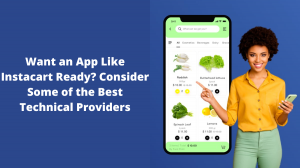In a fast-paced digital marketplace where competition is fierce and consumer attention spans are short, effective website design and functionality play a critical role in driving sales. One of the most effective design elements of an e-commerce website is structured product linking. Structured linking, also known as internal linking, involves creating a network of hyperlinks on a website that connects different pages and products. This article explores how structured linking affects sales and why it's an important strategy for businesses looking to optimize their online presence and increase revenue.
Understanding Structured Binding
Structured linking is the practice of strategically placing hyperlinks on a website to direct users to related content or products. This network of links, such as apps.shopify.com/fast-product-colors, helps users navigate the website more efficiently and encourages them to explore additional products or information. There are several types of structured links, including:
- Contextual Links. These are links embedded within the content of a webpage, leading to related products or categories.
- Breadcrumb Links. These provide a trail of links that show the user's navigation path, allowing easy backtracking to previous pages.
- Related Products Links. These suggest additional products that are similar to or complement the one currently being viewed.
- Navigation Links. These are part of the site's main menu, allowing users to access different categories and pages.
Each type of structured link serves a unique purpose, contributing to a cohesive user experience that can significantly impact sales performance.
Enhancing User Experience and Engagement
One of the primary benefits of structured linking is the enhancement of user experience. When users can easily find what they're looking for and discover related products, they are more likely to stay on the site longer and explore further. This increased engagement often translates into higher conversion rates. For instance, if a user is browsing a clothing retailer's website and encounters links to complementary accessories, they may be inclined to purchase multiple items, thereby increasing the average order value. Structured linking also helps reduce bounce rates. A high bounce rate occurs when users leave a website after viewing only one page, indicating a lack of engagement or dissatisfaction with the site. By providing users with clear pathways to additional content, structured linking encourages them to delve deeper into the website, reducing bounce rates and increasing the likelihood of making a purchase.
Improving Search Engine Optimization (SEO)
Search engines use complex algorithms to rank websites based on their relevance and quality. Structured linking plays a crucial role in search engine optimization (SEO) by improving a site's crawlability and indexing. When search engine bots crawl a website, they follow links to discover new pages and content. Well-structured internal links ensure that all pages on a site are easily accessible and properly indexed, leading to better search engine rankings. Higher search engine rankings result in increased visibility, driving more organic traffic to the website. As more potential customers discover the site through search engines, the likelihood of sales increases. Additionally, structured linking can help distribute page authority and ranking power across different pages, ensuring that not only the homepage but also product-specific pages rank well in search results. Structured linking is a powerful tool for cross-selling and upselling, two strategies that can significantly boost sales. Cross-selling involves recommending related or complementary products to customers, while upselling encourages customers to purchase a higher-end product than the one they're considering. For example, a customer looking at a smartphone might be shown links to phone cases (cross-selling) or a more advanced model (upselling).
By strategically placing links to related products, businesses can subtly guide customers towards additional purchases, increasing the overall value of each transaction. This approach not only enhances the shopping experience but also maximizes revenue potential by leveraging the full range of available products. Structured linking also contributes to building trust and credibility with customers. A well-organized website with clear navigation signals professionalism and attention to detail, which can reassure potential buyers. When customers trust a website, they are more likely to complete a purchase and return for future shopping needs.
In the competitive landscape of e-commerce, structured linking is a vital strategy for businesses seeking to enhance user experience, improve SEO, and drive sales. By creating a network of well-placed internal links, businesses can guide users through their website, encouraging exploration and increasing the likelihood of conversions. Structured linking not only enhances the shopping experience but also plays a pivotal role in building trust and credibility, ultimately leading to increased sales and long-term business success. As the digital marketplace continues to evolve, the importance of structured linking as a tool for optimizing online sales will only continue to grow.






